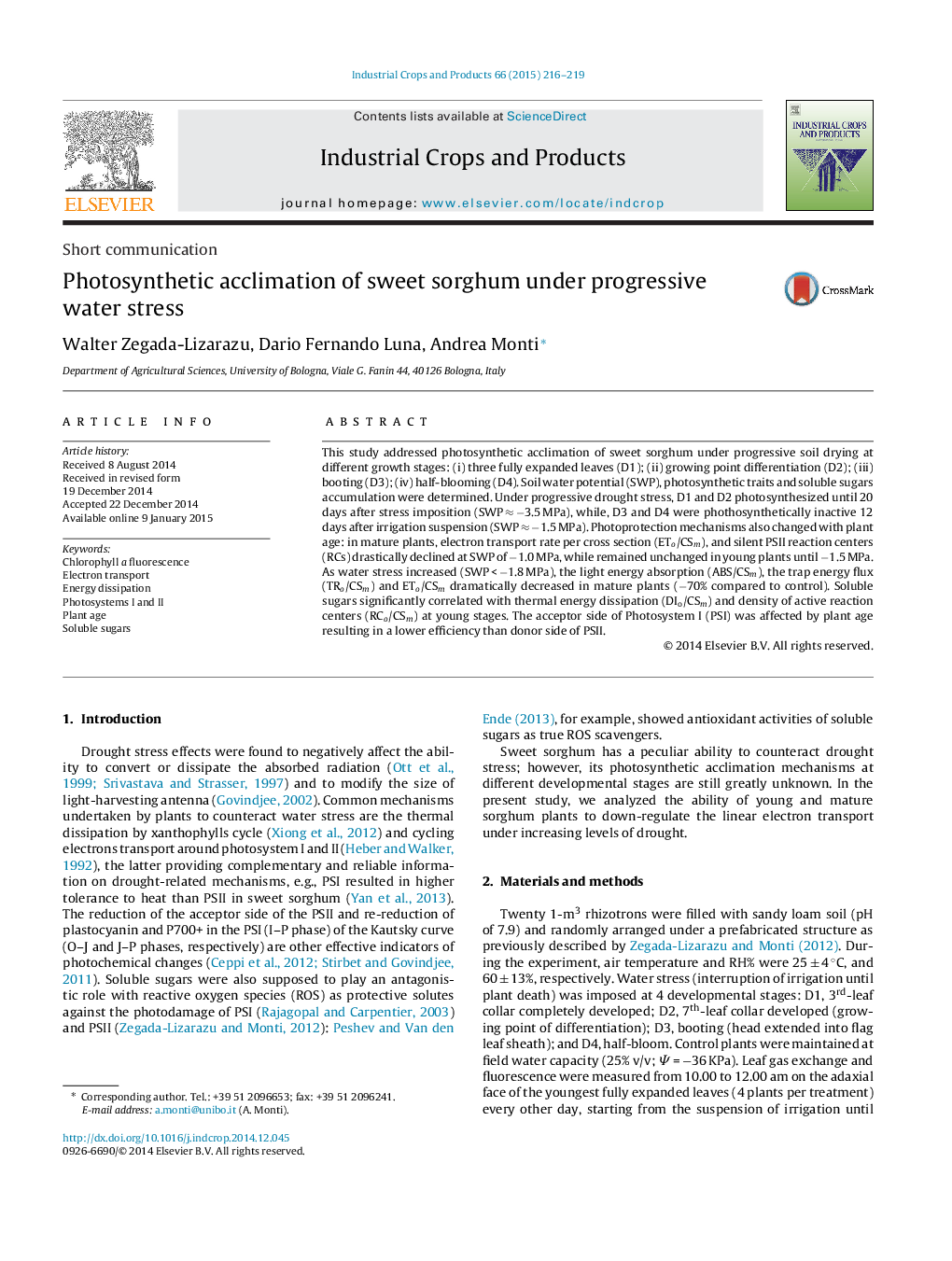| Article ID | Journal | Published Year | Pages | File Type |
|---|---|---|---|---|
| 4513224 | Industrial Crops and Products | 2015 | 4 Pages |
•Energy dissipative mechanisms become ineffective as sorghum plants age.•PSI was less sensitive to drought than donor side of PSII at young stages.•Glucose and sucrose counteract the oxidant effect of drought stress in young plants.
This study addressed photosynthetic acclimation of sweet sorghum under progressive soil drying at different growth stages: (i) three fully expanded leaves (D1); (ii) growing point differentiation (D2); (iii) booting (D3); (iv) half-blooming (D4). Soil water potential (SWP), photosynthetic traits and soluble sugars accumulation were determined. Under progressive drought stress, D1 and D2 photosynthesized until 20 days after stress imposition (SWP ≈ −3.5 MPa), while, D3 and D4 were phothosynthetically inactive 12 days after irrigation suspension (SWP ≈ −1.5 MPa). Photoprotection mechanisms also changed with plant age: in mature plants, electron transport rate per cross section (ETo/CSm), and silent PSII reaction centers (RCs) drastically declined at SWP of −1.0 MPa, while remained unchanged in young plants until −1.5 MPa. As water stress increased (SWP < −1.8 MPa), the light energy absorption (ABS/CSm), the trap energy flux (TRo/CSm) and ETo/CSm dramatically decreased in mature plants (−70% compared to control). Soluble sugars significantly correlated with thermal energy dissipation (DIo/CSm) and density of active reaction centers (RCo/CSm) at young stages. The acceptor side of Photosystem I (PSI) was affected by plant age resulting in a lower efficiency than donor side of PSII.
